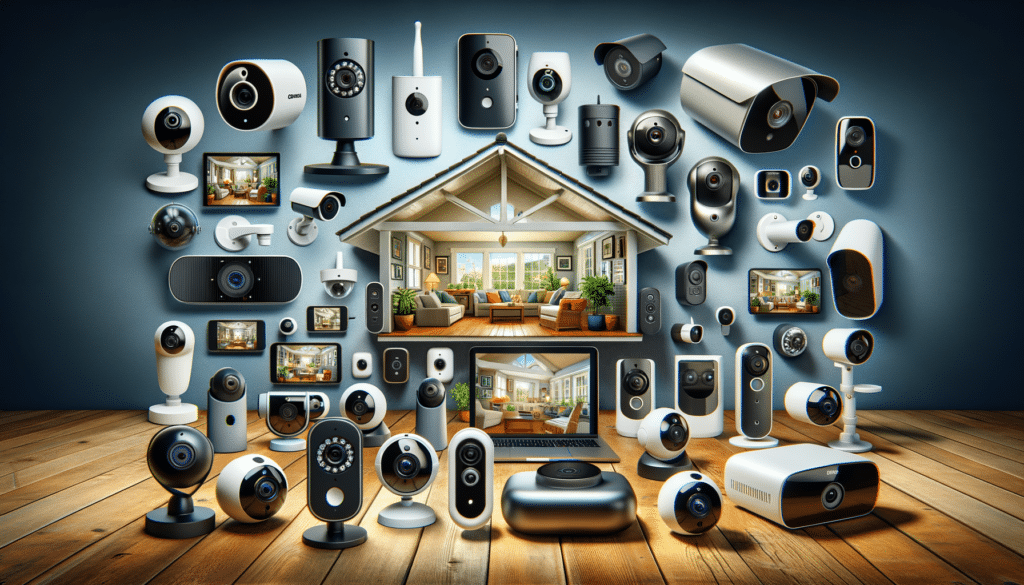The Evolution of Home Cameras
Home cameras have undergone significant transformations over the years, evolving from simple surveillance tools to sophisticated devices equipped with advanced technology. Initially, home cameras were primarily used for basic monitoring, often characterized by grainy footage and limited functionality. However, with technological advancements, these devices have become more versatile, offering features such as high-definition video, night vision, and motion detection.
The integration of smart technology has further enhanced the capabilities of home cameras. Modern devices are now equipped with Wi-Fi connectivity, enabling remote access and real-time monitoring through smartphones and other devices. This evolution has not only improved the quality of surveillance but also made it more accessible and user-friendly.
Key advancements in home cameras include:
- High-Definition Video: Provides clear and detailed images, making it easier to identify individuals and activities.
- Night Vision: Ensures visibility in low-light conditions, enhancing security during nighttime.
- Motion Detection: Alerts users to any movement within the camera’s range, allowing for prompt action.
- Smart Integration: Connects with other smart home devices, creating a cohesive security system.
These advancements have made home cameras an essential component of modern security systems, offering peace of mind and enhanced protection.
Types of Home Cameras and Their Features
When it comes to home cameras, there are several types available, each catering to different needs and preferences. Understanding the distinct features and benefits of each type can help homeowners make informed decisions.
Indoor Cameras: Designed for monitoring the inside of a home, these cameras are ideal for keeping an eye on children, pets, or specific areas like living rooms or nurseries. They often come with features like two-way audio, allowing users to communicate with family members or pets remotely.
Outdoor Cameras: Built to withstand various weather conditions, outdoor cameras are perfect for monitoring the perimeter of a property. They usually have robust features such as weatherproofing, wide-angle lenses, and infrared night vision.
Doorbell Cameras: These cameras are integrated into doorbells, providing a convenient way to see and communicate with visitors without opening the door. They are equipped with motion sensors and can send alerts to a user’s smartphone when someone approaches the door.
Wireless Cameras: Offering flexibility in placement, wireless cameras do not require complex wiring. They are easy to install and can be moved around as needed, making them a popular choice for renters and those seeking a hassle-free setup.
Each type of home camera offers unique advantages, and selecting the right one depends on specific security needs and the layout of the home.
Benefits of Installing Home Cameras
Installing home cameras comes with a multitude of benefits that extend beyond just security. These devices not only deter potential intruders but also provide valuable insights into daily activities and enhance overall peace of mind.
One of the primary benefits of home cameras is their deterrent effect. The mere presence of cameras can discourage criminal activity, as potential intruders are less likely to target homes with visible surveillance systems. This proactive measure significantly reduces the risk of break-ins and theft.
Additionally, home cameras offer valuable evidence in the event of a security breach. High-definition footage can assist law enforcement in identifying and apprehending suspects, increasing the chances of recovering stolen property.
Other notable benefits include:
- Remote Monitoring: Allows homeowners to keep an eye on their property from anywhere in the world, providing reassurance and control.
- Insurance Benefits: Some insurance companies offer discounts on premiums for homes equipped with security systems, including cameras.
- Enhanced Safety: Cameras can monitor activities within the home, ensuring the safety of family members, especially children and elderly relatives.
Overall, the installation of home cameras not only enhances security but also contributes to a safer and more connected living environment.
Considerations When Choosing a Home Camera System
Before investing in a home camera system, there are several factors to consider to ensure the chosen setup meets specific needs and preferences. These considerations can help homeowners select the most suitable system for their unique circumstances.
Budget: Home camera systems vary in price, and it’s essential to determine a budget before exploring options. While more expensive systems often offer additional features, there are also affordable options that provide reliable security.
Installation: Consider whether a DIY installation is feasible or if professional assistance is required. Some systems are designed for easy installation, while others may require more complex setup procedures.
Connectivity: Evaluate the connectivity options available, such as Wi-Fi or wired connections. Wireless systems offer flexibility, but wired systems may provide more stable connections.
Features: Determine which features are most important, such as night vision, motion detection, or two-way audio. Prioritizing essential features can help narrow down options.
Compatibility: Ensure the camera system is compatible with existing smart home devices for seamless integration.
By carefully considering these factors, homeowners can select a home camera system that provides optimal security and meets their specific needs.
Future Trends in Home Camera Technology
The future of home camera technology is promising, with ongoing innovations poised to enhance the functionality and convenience of these devices. As technology continues to advance, home cameras are expected to become even more integral to modern security systems.
One of the emerging trends is the integration of artificial intelligence (AI) in home cameras. AI-powered cameras can analyze video footage in real-time, distinguishing between different types of movement and identifying potential threats more accurately. This capability reduces false alarms and enhances the overall effectiveness of the security system.
Another trend is the development of more energy-efficient cameras. As environmental concerns grow, manufacturers are focusing on creating devices that consume less power while maintaining high performance. Solar-powered cameras are becoming increasingly popular, offering a sustainable option for outdoor surveillance.
Additional trends include:
- Improved Connectivity: With the expansion of 5G networks, home cameras will benefit from faster and more reliable connections, enabling seamless streaming and real-time alerts.
- Advanced Integration: Future cameras will likely offer enhanced integration with smart home ecosystems, allowing for more comprehensive automation and control.
- Enhanced Privacy Features: As privacy concerns rise, manufacturers are incorporating features like encrypted data transmission and customizable privacy zones to protect user information.
These trends indicate a bright future for home cameras, with technology continuing to evolve to meet the demands of modern security needs.




